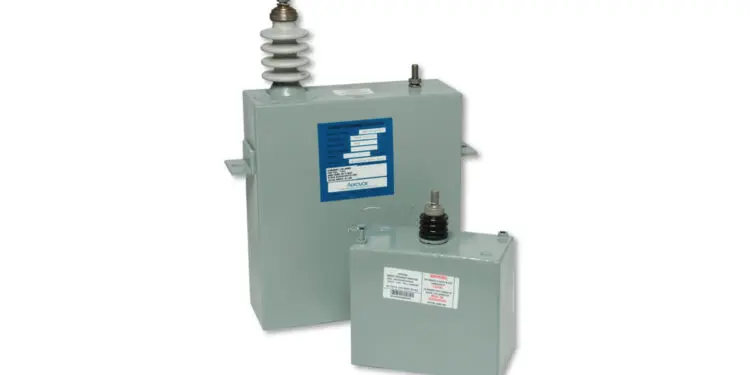CDE Cornell Dubilier Electronics, Inc. announces a major product expansion of standard and custom high energy storage, pulse-discharge capacitors.
These are specialized devices, designed for applications requiring repetitive high energy and high voltage charge/discharge cycles. The capacitor technology is based on film dielectric with self-healing metalized or high current discrete foil electrodes, depending upon application requirements. There are both dry and oil-impregnated types, offered with a broad range of plastic or metal packaging configurations and a variety of terminal options.
Features
- High voltage ratings to 100 kV
- Designed for user specified life
- Dielectric design based on application requirement (Film/Foil, Metallized Film)
- Wide range of dielectric materials-based application
- Oil filled dry epoxy construction
- Multiple terminal options
- Metal and plastic case design options
- Low inductance
Applications
- Industrial & Medical Laser
- High Power Lasers
- Diagnostic Imaging Equipment
- MARX Generator Banks
- Electro-Magnetic Pulse Forming (EMP)
- Flash Lamp
- Strobe Lights
- Particle Accelerators
- Energy Storage
- High Energy Dynodes
- Research & Development
- Military Applications
- Electromagnetic Propulsion Systems (EMPS)
Designed to deliver large amounts of energy in short bursts, these devices are aimed at end-product applications in external defibrillators, industrial lasers, critical military applications, pulse forming networks, and more. These specialized markets are growing more rapidly than many others in power electronics, and often require custom products. Reliability of these capacitors is paramount, and must therefore be designed, constructed, and tested to deliver consistent performance over the life of the application.
Due to the critical nature of their applications, CDE stresses the need to gain a thorough understanding of the performance requirements and will work collaboratively with customers to develop an optimal solution. Designs are typically qualified after considerable testing by CDE and in the customers’ testing programs.
Cornell Dubilier’s high energy storage, pulse-discharge capacitors are designed and built in the USA, with voltage ratings up to 100 kV and peak discharge current ratings of up to 250 kA.































